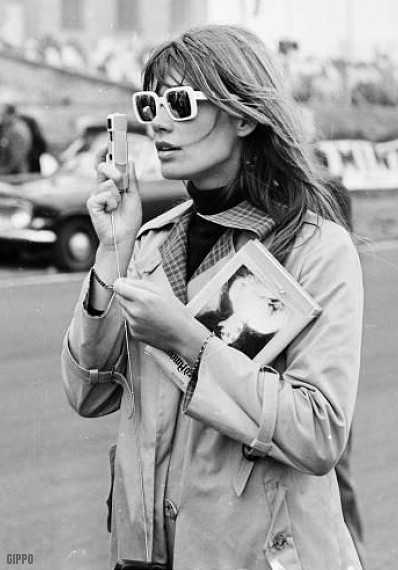
Yé-yé is a genre of dance, pop music that was mainly spearheaded by women, many of whom were teenagers. Go-go would be the American equivalent to this movement. This was largely influenced by American twist and dance records, as well as British pop like The Beatles. This music was a celebration of youth: holidays, love, adventure. Joi de vivre was the definite mindset. Artists were generally from France, Quebec and Spain, although it gained popularity elsewhere, especially Japan.
Origins:
The style originated in the late 1950s and gained most of its popularity into the early 1960s. The term, coined in 1963 to describe the blossoming youth culture. The actual word comes from the English, "yeah! yeah!" which was heard in American twist records from the '50s. "Salut les copains" was a radio program in France at the time, which launched many careers of Yéyé artists and the culture in France.
Artists:
The majority of the Yé-yé artists were women. Some of the most famous women from this genre are Brigitte Bardot, France Gall, Sheila, and Françoise Hardy. There was a freedom in music that came with the influx of female liberation and youth culture in the 1960s. However, while some of this music promoted independent women, there was also a hyper-sexuality and Lolita culture, since many of the female artists were young. Authors of many popular songs from the time were men. Serge Gainsbourg, for example, wrote for France Gall, Petula Clark, and Brigitte Bardot.
"Poupée de cire, poupée de son" went on to become a huge hit in France and the following year Gainsbourg penned another best-selling single for France Gall, giving her the song "Les Sucettes". ("Les Sucettes" acquired its own special place in French music history. 19-year-old Gall's innocent performance of the song completely missed Gainsbourg's ironic/erotic subtext, much to the delight of certain French music critics). Apparently, France never quite grasped the full sense of Gainsbourg's famous double entendres, but the pair's collaboration came to an end shortly after "Les Sucettes" (RFI Musique).
There was also the trend of Yéyé Boys and fell into the non threatening male category of musicians: Michel Polnareff, Jacques Dutronc, Claude François.
One difference between France and Quebec at the time was the amount of male groups in Canada. There were the rare female groups, but it was mostly male dominated.
Culture:
Fashion and music went hand in hand during this time. Go-go boots, miniskirts and monokinis came out of this era of sexuality, youth and progress. This style originated in France, beginning in 1964 and then moving to England, where most associate the trend. Other new designers of the time were Pierre Cardin, Yves Saint Laurent and Daniel Hechter.
Decline:
In France, 1968 brought enormous change politically, culturally and musically. The student strikes in May of that year changed the landscape and the bubblegum music of the early 60s was fading. Rock and folk music from England and America were also having a large influence, especially on music with socio-political messages.
In Quebec, the decline of yé-yé came later than France, in the 1970s. The notion of Nationalism, straying from influences from foreign sources and returning to roots shifted the popularity of music. Traditional, Quebecois folk music became the vehicle for political messages and the main musical medium.
Tune in to Pardon My French, Wednesday July 21st from 6-7pm where Yéyé will a main topic of discussion. Listen in for Yéyé from France and Quebec from the 1960s, its influences today's music in Canada, Europe and Japan, and artists that inspired the genre.
Resources:
http://www.thecanadianencyclopedia.com/index.cfm?PgNm=TCE&Params=U1ARTU0004125
http://en.wikipedia.org/wiki/Yé-yé
http://www.teppaz-and-co.fr/accueil.html
No comments:
Post a Comment